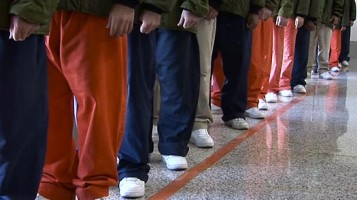
We previously covered how prison inmates and those who work with them or live near prisons are at risk for elevated levels of exposure to environmental toxins, as well as the physical and emotional abuse that transgender inmate sometimes face in prison. In this third part, we will look at juvenile detention centers and the harsh, (sometimes injurious) unconstitutional conditions that minors face in these facilities.
Appalling and Unconstitutional Conditions
Specifically, some corrections departments have featured such unconstitutional conditions that they have been placed under court orders and received scathing reports from the district’s inspector general and other experts. The physical and environmental abuse itself is also alarming; children in custody regularly being beaten, rats and cockroaches in the facilities, youth locked up for so long that they had to go to the bathroom in their cells, staffers sexually harassing and selling drugs to minors and each other, etc. Some female staffers reported that if they did not perform sexually for supervisors, they would find themselves in “dangerous situations” regarding other inmates. And any officers who came forward as witnesses would experience severe harassment as well from other staffers.
In New York specifically, probation officers reported routinely re-incarcerating people for minor, technical, noncriminal violations simply because they were afraid for their jobs—an act that, when combined with similarly appalling conditions there, brought the Justice Department to sue the juvenile facilities twice.
Racial Discrepancies
African-Americans and Latinos are incarcerated at much higher rates than whites. Specifically, one corrections department head reported that in his five years running the Washington D.C. system, he never once saw a white youth in the correctional facility.
Inappropriate Responses
Despite the widespread horrific institutional conditions in many of the facilities, correctional actions taken usually include firing one specific person, which never addresses the actual problem. Specifically, systematic abuse, violence, and excessive use of isolation and restraints have been documented in juvenile institutions in close to 40 states over the last 45 years, resulting in almost 60 lawsuits where there were court-sanctioned remedies.
The Hope for More Community Programming
Fortunately, leaders who have been able to reduce the number of incarcerated youths (and the number of institutions) have done it by creating a network of community-based programs; specifically, California, New York, and New Jersey have been able to reduce both incarceration rates and crime this way.
Contact Our Environmental Hazard Attorneys for Assistance
Simply because a child is in a juvenile facility does not exempt them from having the same human rights as everyone else—freedom from personal injury and victimization. If you or a loved one has experienced physical abuse in a corrections facility from unconstitutional conditions, you may have legal recourse. Contact Harrell & Nowak today for a free consultation.
